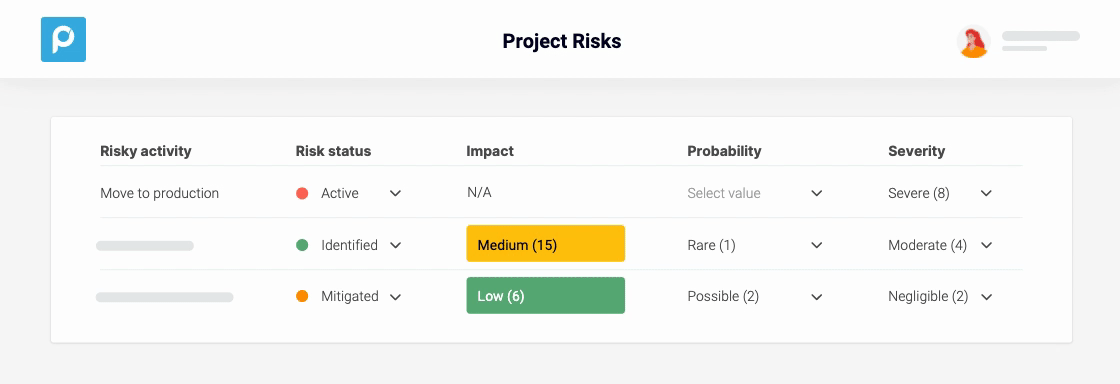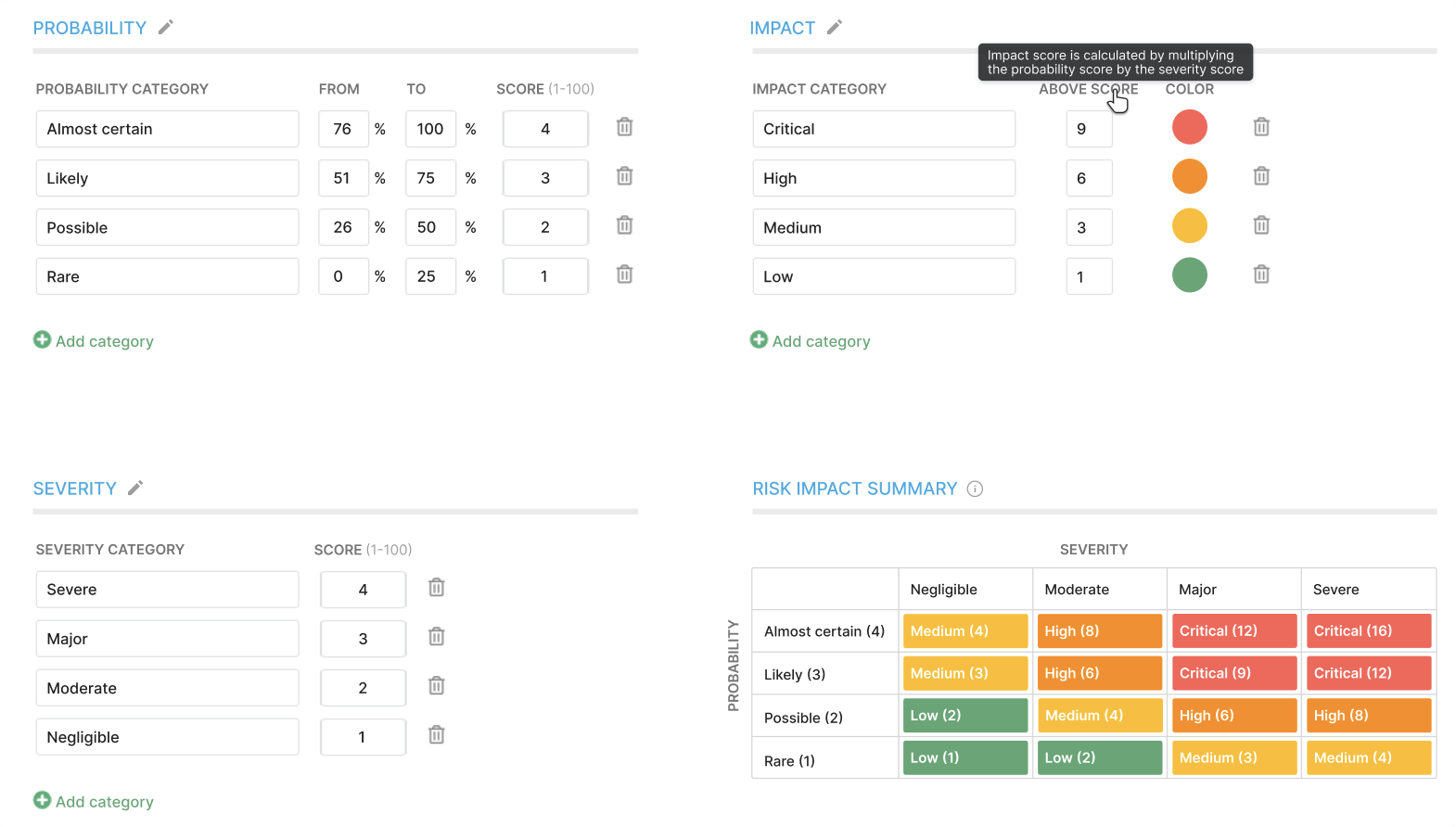Every project manager knows preparation is key to success. Preparing for problems, however, is what sets the best project managers apart. In an ideal world, projects meet or even exceed expectations, but with lack of foresight, things can just as easily turn sour.

Experienced project managers identify potential risks and prepare prevention and mitigation strategies to keep them on track. Being prepared allows an organization to capitalize on unique opportunities, at the same time preventing the loss of time and money.
But how can we manage the unknown? In this article, we’ll delve into the best ways to effectively identify, prevent and mitigate potential risks. Additionally, you’ll learn about an excellent way to visually monitor risk levels – from single projects to whole project portfolios – all using Proggio.
What is Project Risk Oversight?
All established businesses need project plans to make sure things run efficiently, to deadlines and in a coordinated manner. A fundamental aspect of any successful project plan is risk management – where managers take steps in order to prevent and mitigate any unforeseen factors. While many forces can impact both the quality of execution and the budget of your projects, a well-thought-out, quantifiable risk assessment plan plays a strong part in building confidence and ensuring success.
How to Manage Risks with Proggio
Proggio helps you clearly identify, categorize, monitor, prevent and mitigate definable risks. It also enables you to manage potential risks from a high-level portfolio risk management perspective. A quick glance at Proggio provides you with an intuitive visual view of which projects need urgent attention and those which can be attended to at a later time.

Proggio’s portfolio-level risk management view provides you with the means to:
- Instantly identify which projects have reached a specified risk level
- Review the progress of risk management plans and how many preventative measures have been taken
- Identify which risks are currently being mitigated and the risk owner.
In order to encourage collaboration, Proggio helps you assign team members to be responsible for risks, add documents, set priorities and more. After these have been assigned, you can track their completion using Proggio’s real-time, intuitive and easily-shareable risk management list view.
From beginning to end, the basic steps needed to manage risks are as follows:
1. Identify the risks
Using Proggio, you can mark risky activities and create a list featuring all potential risk events and their respective stakeholders. Once the list is completed, it is automatically added to the risk management list view.
2. Create a risk matrix
A risk matrix takes into account the probability of a risk occurring and its potential severity, helping you categorize the level of impact. Proggio’s automated risk matrix feature is intuitive, efficient and customizable – your previous time spent wasted on manually creating risk matrixes on spreadsheets can be put to better use!

3. Classify at-risk projects
At this point, enter each project and break down the factors that may positively or negatively impact its objectives, scope and deliverables. You should do this risk assessment for each project’s relevant activities. Any activities marked as risky, will automatically update the risk matrix and related fields up to the portfolio level.
Prioritize and monitor your risks
At this point, the data reflected will be automatically displayed within the portfolio view – you’ll be able to see the project’s progression in real-time as stakeholders update each activity’s status.
Unique Benefits of Risk Oversight in Proggio
- Gain an executive (portfolio) level risk management view
In Proggio you can immediately see an autogenerated view of projects risk levels and act accordingly. - Manage Accurately and Timely
Proggio views are based on real-time data, enabling you to manage the prevention of risks when they arise. - Automate and Apply a Risk Matrix Directly to Projects
Creating a risk matrix has never been easier. Input the settings for risk probability and severity to generate the impact levels, in Proggio and you will automatically create and apply the risk matrix to the relevant projects. Now you’re always able to prioritize project risks with clarity and manage them with full control.
Conclusion
When time is of the essence, you should be able to get an updated real-time view of the projects and their risk status and risk levels in a visual snapshot. This snapshot will instantly reveal which projects require urgent attention and prioritization at the right time.
In addition, no time is wasted with unnecessary meetings or sending emails back and forth. The relevant stakeholders will automatically be visually signaled to mitigate instantly.
Enable your organization’s risk management more efficiently with Proggio’s clear and simple risk management feature.